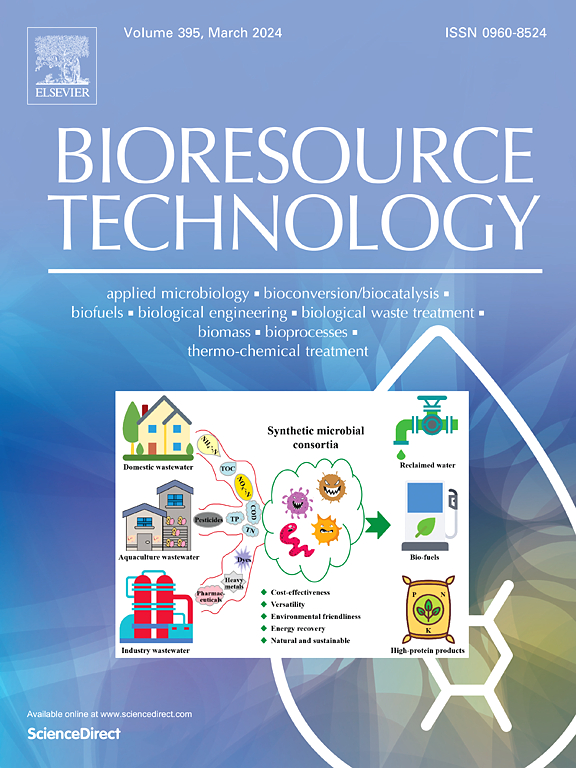Pathway optimization and membrane engineering for highly efficient production of indigoidine in engineered Escherichia coli
IF 9
1区 环境科学与生态学
Q1 AGRICULTURAL ENGINEERING
引用次数: 0
Abstract
Recently, indigoidine has garnered increasing attention and demonstrates significant commercial potential, particularly within the textile industry. As a diphenyl quinone compound, indigoidine shows promise as an alternative colorant due to its superior chemical functionality and stability. Consequently, we engineered Escherichia coli BL21(DE3) containing plasmids to efficiently produce indigoidine using glycerol as the sole carbon source. Initially, eighteen combinations of indigoidine synthases and 4′-phosphopantetheinyl transferases (PPTases) were constructed to identify the most effective enzyme combination for indigoidine production. Subsequently, the rate-limiting steps were identified through the supplementation of various precursors. The titer of indigoidine was significantly enhanced through the optimization of its biosynthetic pathway and membrane engineering. Ultimately, a systematic optimization of the fermentation parameters for the engineered BIG33 strain was conducted in shake-flask experiments. As a result, the maximal indigoidine titer reached 4.95 and 26.71 g/L by shake-flask cultivation and fed-batch fermentation, respectively.
工程大肠杆菌高效生产靛蓝素的途径优化与膜工程。
最近,靛蓝得到了越来越多的关注,并显示出巨大的商业潜力,特别是在纺织工业中。作为一种二苯基醌类化合物,靛蓝素具有优越的化学功能和稳定性,有望成为一种替代着色剂。因此,我们设计了含有质粒的大肠杆菌BL21(DE3),以甘油为唯一碳源有效地生产靛蓝苷。首先,构建了18种靛蓝苷合成酶和4'-磷酸蚁甲酰基转移酶(PPTases)的组合,以确定最有效的靛蓝苷合成酶组合。随后,通过补充各种前体确定了限速步骤。通过对靛蓝苷生物合成途径的优化和膜工程的研究,使其效价显著提高。最后,在摇瓶实验中对BIG33菌株的发酵参数进行了系统优化。结果表明,摇瓶培养和补料分批发酵的靛蓝苷滴度最高分别为4.95和26.71 g/L。
本文章由计算机程序翻译,如有差异,请以英文原文为准。
求助全文
约1分钟内获得全文
求助全文
来源期刊

Bioresource Technology
工程技术-能源与燃料
CiteScore
20.80
自引率
19.30%
发文量
2013
审稿时长
12 days
期刊介绍:
Bioresource Technology publishes original articles, review articles, case studies, and short communications covering the fundamentals, applications, and management of bioresource technology. The journal seeks to advance and disseminate knowledge across various areas related to biomass, biological waste treatment, bioenergy, biotransformations, bioresource systems analysis, and associated conversion or production technologies.
Topics include:
• Biofuels: liquid and gaseous biofuels production, modeling and economics
• Bioprocesses and bioproducts: biocatalysis and fermentations
• Biomass and feedstocks utilization: bioconversion of agro-industrial residues
• Environmental protection: biological waste treatment
• Thermochemical conversion of biomass: combustion, pyrolysis, gasification, catalysis.
 求助内容:
求助内容: 应助结果提醒方式:
应助结果提醒方式:


